HP Stream 7 Review: A $119 Windows Tablet
by Brandon Chester on December 19, 2014 8:00 AM ESTDisplay
The display is one of the most important aspects of a device, as it's the portal for interaction between the user and the software. Unfortunately, with inexpensive devices like the Stream 7, the display is often the first thing to be put on the chopping block. It's simply very difficult to put a high quality panel in a low cost device and make money selling it. That being said, HP has actually attempted to put a decent panel in the Stream 7 considering its price target.
Like I stated before, many other tablets at this size and price point either opt for a TN panel, or they reduce the resolution to 1024x600 or even go lower to 800x480, which is borderline unusable. HP has put a 1280x800 IPS panel in the Stream 7, which is fairly good considering that two years ago most Android tablets of any size shipped with that same resolution. The glass is highly reflective, and this is coupled with the fact that the display isn't laminated. There's also some light bleed at the bottom, but at $119 I can excuse this.
Of course, specs that you read on paper like size and resolution only tell part of the story. Color accuracy, brightness, and contrast all have an impact on overall display quality, and to measure these we use SpectraCal's CalMAN 5 software along with X-Rite's i1Pro 2 spectrophotometer and i1Display Pro colorimeter.
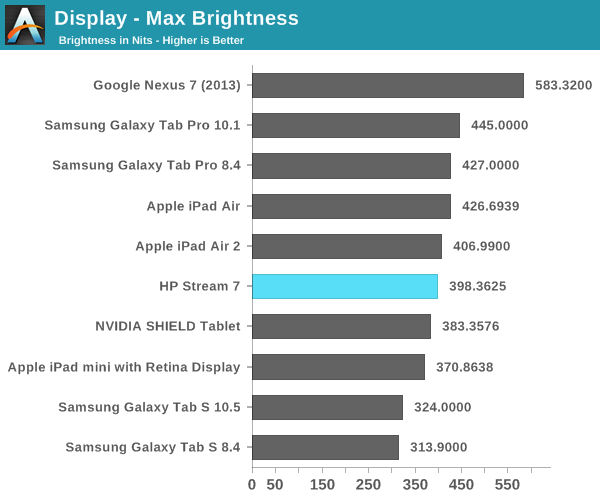
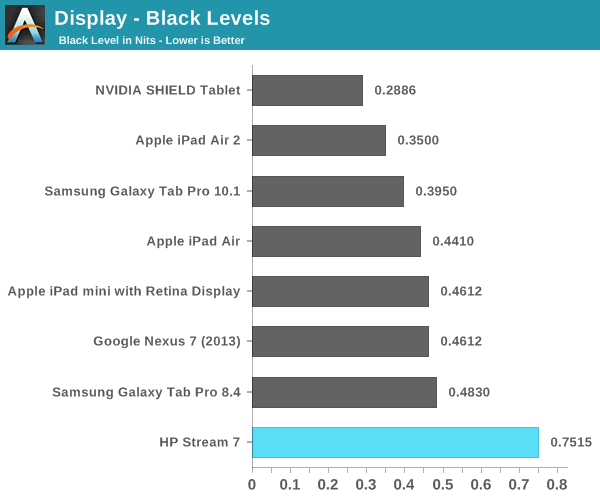
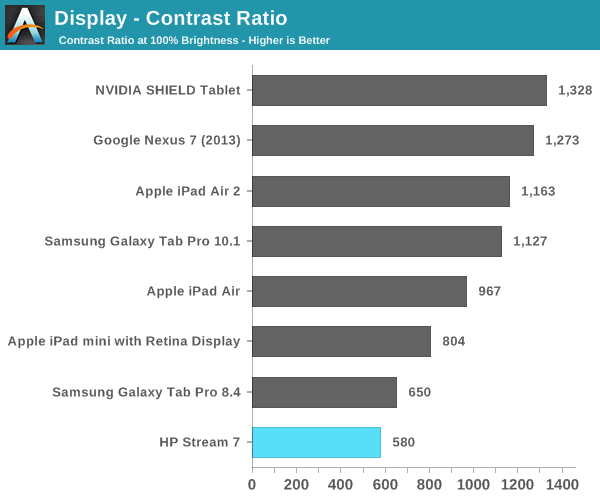
As you can see, the brightness of the Stream 7 is competitive with other tablets. Unfortunately, the black levels are just too high, which in turn leads to a very low contrast ratio. It should be noted that these measurements were achieved by disabling Intel's Display Power Saving Technology (DPST) feature, which causes dynamic brightness and contrast depending on the image displayed on the screen. While some other devices do this to some degree, DPST ended up reducing max brightness measurements by nearly 100nits, and the constantly changing brightness played havoc with measurements during analysis and calibration.


In the grayscale we see a shift toward blue, with the red steadily dropping off as brightness increases. This leads to the grayscale performance being some of the worst we have tested, but at $119 there's really no room for HP to do any calibration to the display panels at the factory.
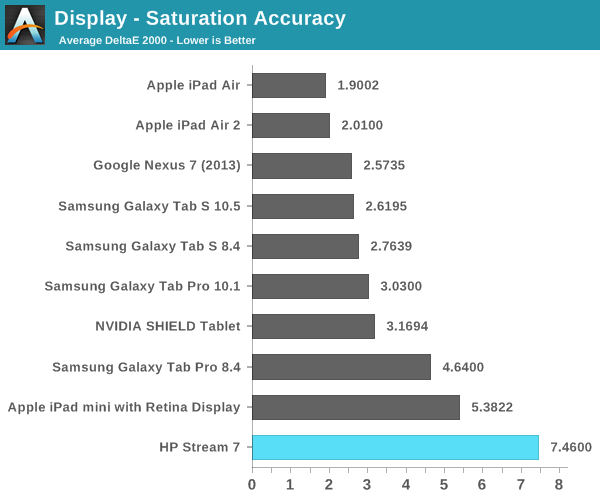
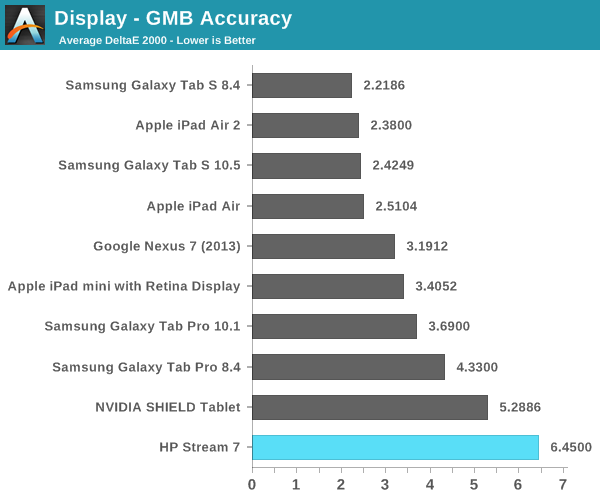
As with the grayscale test, we see poor performance in the saturation sweep. The display does not cover all of sRGB, and we see that for each 20% increment in the saturation sweep, the red, blue, and magenta saturations are all 20% lower than they should be and just generally inaccurate. The poor grayscale and saturation performance leads to a high average error in the color checker test, which means that the Stream 7 is not going to be able to accurately reproduce colors.
Again, this is to be expected with a device of this price point. It does however provide a good example of how the idea that IPS technology correlates with color accuracy is a misconception. With the prices of IPS displays being driven into TN territory by affordable eIPS panels, having an IPS display really just guarantees better viewing angles than a TN panel, nothing more.
One last thing to note about the display which does not show up in any measurements is that it is a 6bit + AFRC eIPS panel. This is not uncommon even in desktop monitors that cost as much as $400, but it does mean that there is noticeable posterization compared to a display with actual 8-bit color depth for red, green, and blue. This is not helped by the fact that Internet Explorer is not smart about displaying images; it doesn't seem to apply the same dithering that Chrome and Firefox do to mask color banding.
Calibration
Fortunately, the HP Stream 7 runs Windows. Unlike Android and iOS, Windows has color management capabilities. This allows us to calibrate the Stream 7 in an attempt to fix some of the issues with the display. We are working with a narrow gamut panel here so we aren't going to see much improvement to the saturation test, but we can certainly improve grayscale and color accuracy within the display's gamut.
After creating and applying an ICC profile created by CalMAN, we see a dramatic improvement in grayscale performance on the Stream 7. Gone is the shift toward blue, with a white point of 6595K that is very close to standard. Shades of grey are now accurate enough that you would be unable to see a difference from a reference monitor. These improvements unfortunately are accompanied by a significant drop in luminance, with a max display brightness of 308.5 nits after calibration.
We see slight improvement in the saturation sweep, but it's still nothing exceptional and unfortunately bound by the display's small color gamut. However, there's a significant improvement in the color checker test, although much of this can be attributed to the improvements in grayscale. There is an overall improvement in the accuracy of colors, but a few colors actually have a greater error after calibration than before. The biggest improvements are to mixtures of green and red, which has a significant impact on photos and videos by improving the accuracy of skin tones.
Overall, I'm surprised that the Stream 7 was able to be improved this much. It's certainly not perfect after calibration but it's much better. Unfortunately, I don't think many buyers of the Stream 7 are going to have the necessary equipment to calibrate the display properly, so it's more of an academic exercise.


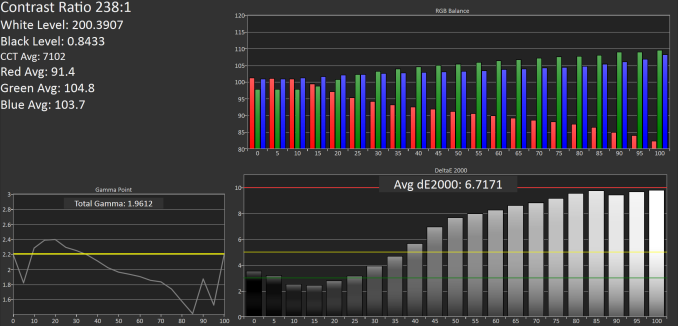
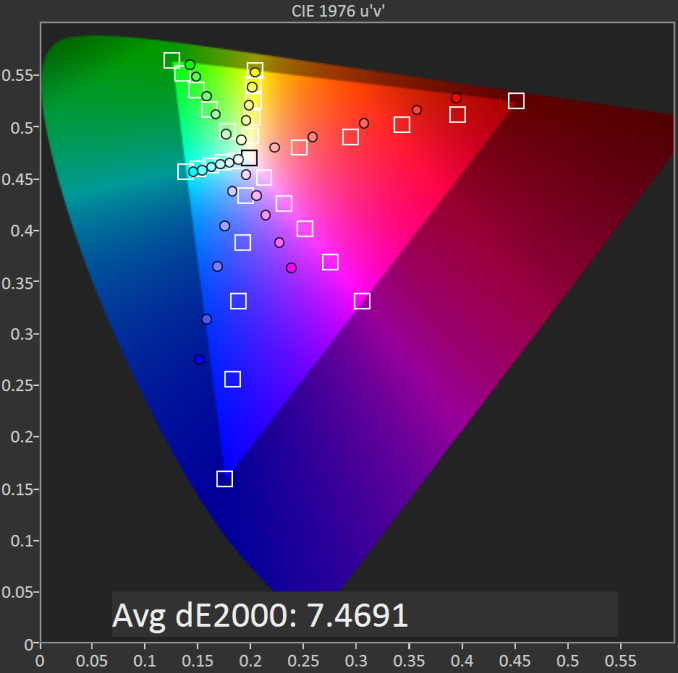
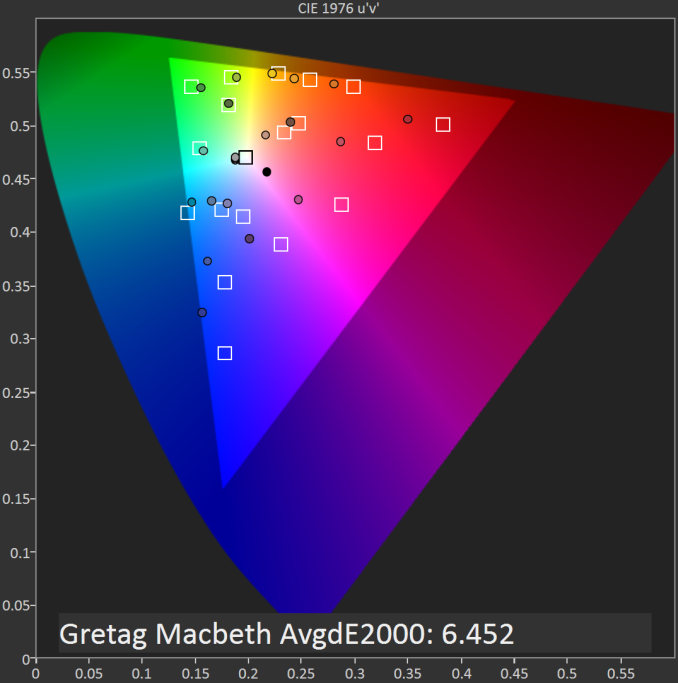
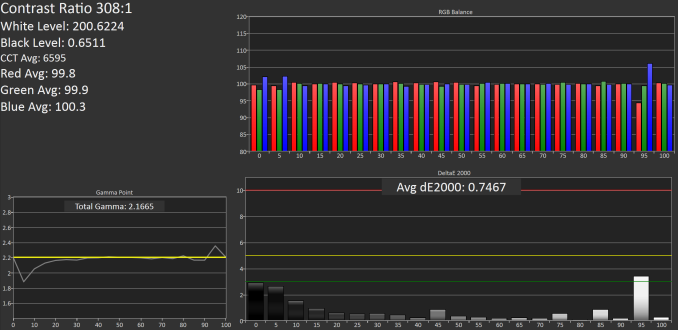
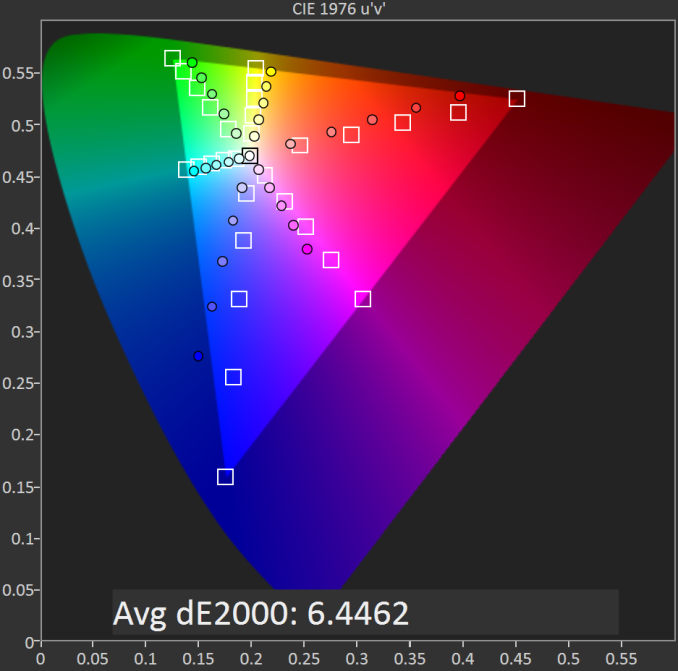
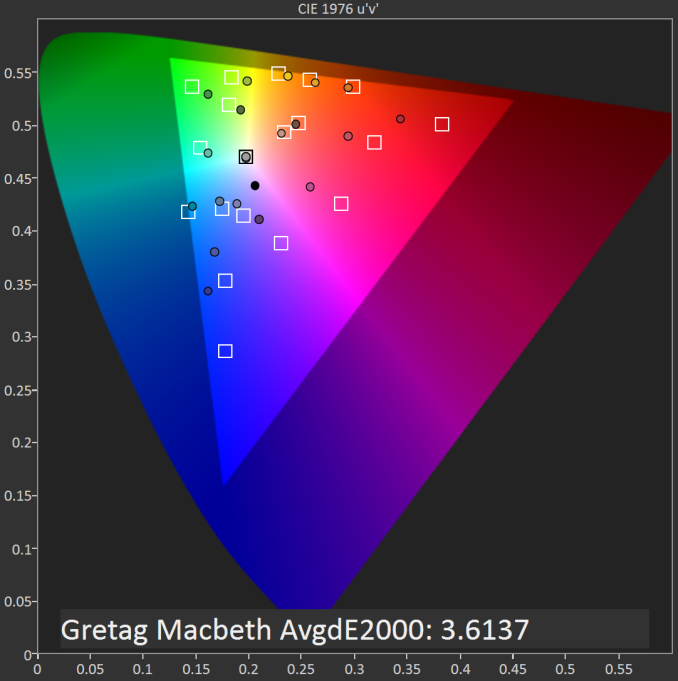








157 Comments
View All Comments
eriri-el - Saturday, December 20, 2014 - link
No problem there, wouldn't want you guys to get into trouble. Strange, UFOTest shows my display refreshing at 53Hz. Time to ask HP directly. I apologize for assuming that you missed it out, might be a problem/defect on my end. Thanks for the reply.Brandon Chester - Saturday, December 20, 2014 - link
Does yours say 53Hz in the Intel control panel?eriri-el - Saturday, December 20, 2014 - link
Yes it does. The Intel control panel shows 53p Hz only. Strange, I've posted in the HP forums, and so far one person says that his Stream 7 runs at 53Hz too.Brandon Chester - Saturday, December 20, 2014 - link
That's super odd. I can confirm mine says 60p. I would love to contact HP about that, but they haven't even gotten back to me about the headphone jack and WiFi so you'll have as much luck getting answers as I will.Brandon Chester - Sunday, December 21, 2014 - link
Updating to the latest bios brought it to 53Hz.eriri-el - Sunday, December 21, 2014 - link
So I guess my device comes with a newer bios out of the box compared to your device. Thanks for updating me. Guess I'll let it slide since it's not really a defect, nor does it affect the user experience on such a budget device.Yuriman - Saturday, December 20, 2014 - link
Highly interested in this device. I'm very happy with the HP Chromebook I got recently, and it looks like this tablet should be able to run Hearthstone well enough.jameskatt - Saturday, December 20, 2014 - link
Great review. The most important thing I learned: I would rather have a great laptop like a MacBook Air running Windows 10, than any Windows Tablet. Windows is simply better interfaced for computers with keyboards and mice not fingers.jb14 - Saturday, December 20, 2014 - link
I picked up similar tablet, a cheap Chinese import to the UK (Voyo WinPad A1 mini) at just under £100. 2GB and 8" being the main differences. Great as a couch surfer and using on planes/trains, using the OTG cable & accessories when x86 is required. I wouldn't spend more than £150 on such a device personally though.Teknobug - Saturday, December 20, 2014 - link
Wow why are there so many cheap Windows tablets lately. The low price always tells me "junk", but it makes me wonder. I'd love an x86 based tablet to handle some stuff I do on my desktop while on the go (without needing VNC or remote desktop).